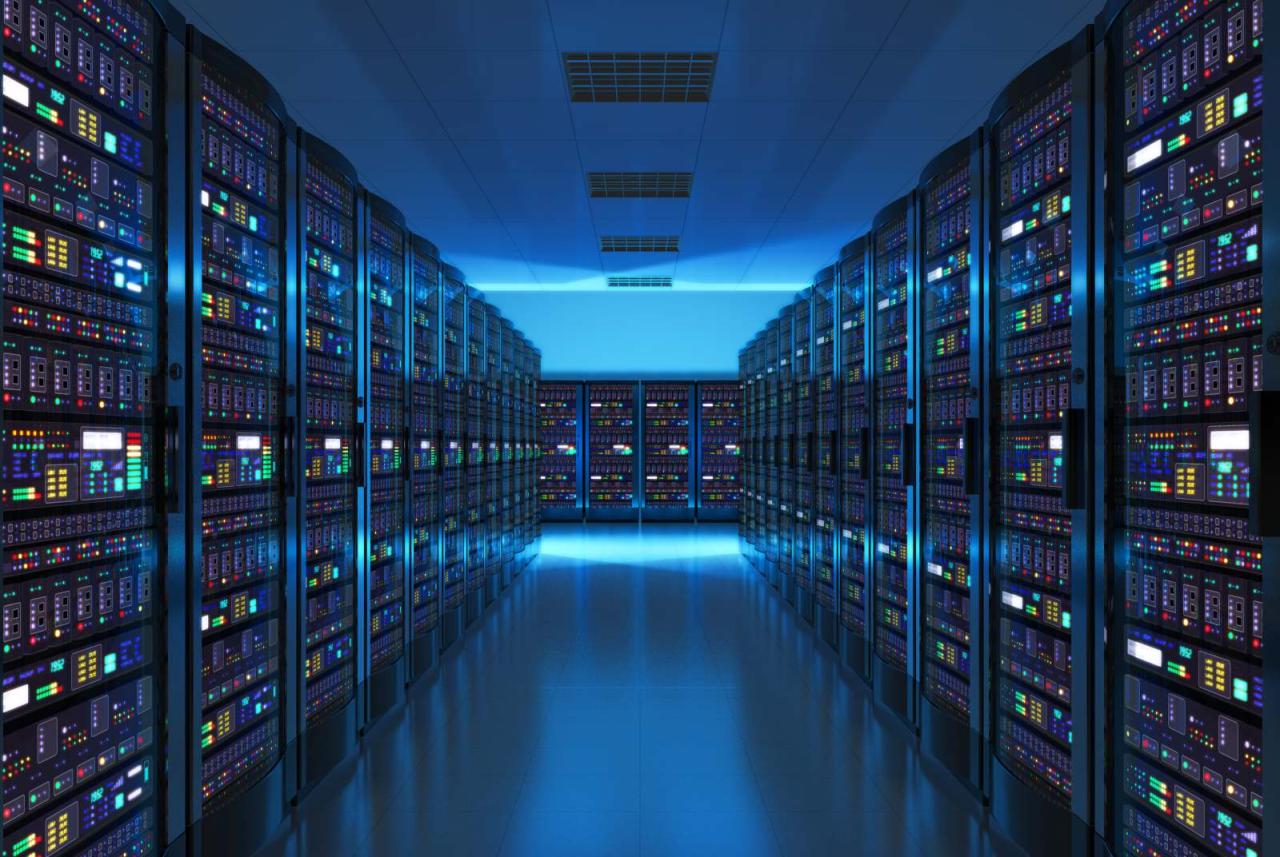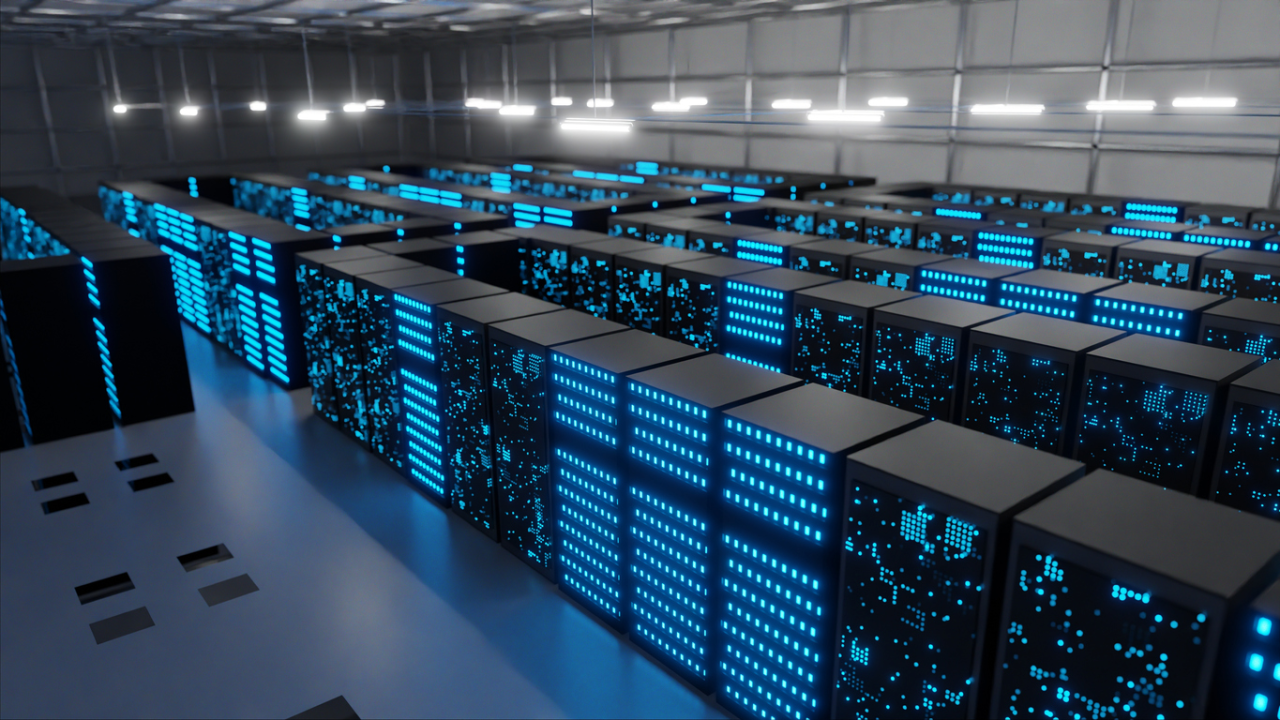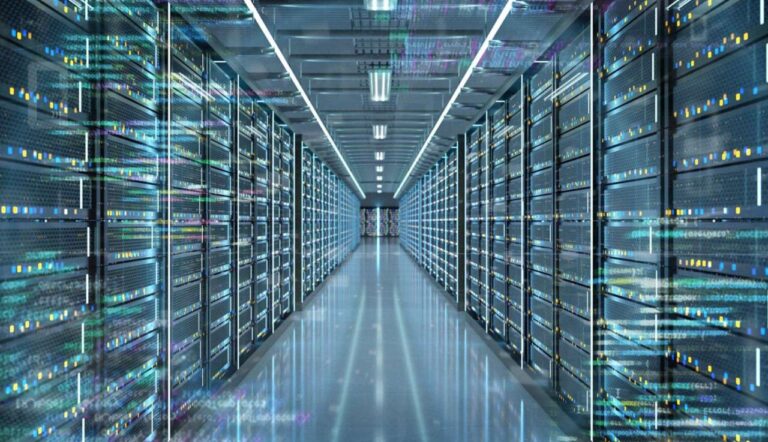The landscape of artificial intelligence is undergoing a monumental transformation, largely driven by astonishing advancements in AI server technology. We are witnessing a revolution where the very infrastructure supporting AI is evolving at an unprecedented pace, unlocking capabilities that were once confined to the realm of science fiction. These breakthroughs are not merely incremental improvements; they represent fundamental shifts in how we process, analyze, and learn from data, propelling industries into a new era of intelligence and automation.
Why AI Servers Matter More Than Ever

In the grand tapestry of technological progress, AI servers are the unsung heroes. They are the powerful engines tirelessly working behind the scenes, enabling everything from sophisticated language models and real-time image recognition to autonomous vehicles and groundbreaking scientific discoveries. Without specialized, highly optimized servers, the ambitious promises of artificial intelligence would remain just that – promises.
The surging demand for AI has created an insatiable appetite for computational power. Traditional server architectures, while robust, often fall short when confronted with the unique demands of AI workloads. These workloads are characterized by massive datasets, parallel processing requirements, and iterative model training, all of which necessitate specialized hardware and software integration. This is where the innovation in AI servers truly shines, providing the bedrock upon which the future of AI is being built.
Core Architectural Innovations
At the heart of the AI server revolution lies a series of profound architectural innovations designed to maximize computational efficiency and throughput. These are not just about faster processors, but about entirely reimagined systems built from the ground up for AI.
A. Specialized Processing Units
While Central Processing Units (CPUs) remain vital for general-purpose computing, AI workloads demand more. This has led to the proliferation and dominance of specialized processing units:
- Graphics Processing Units (GPUs): The Workhorses of AI
- Initially designed for rendering complex graphics, GPUs possess a highly parallel architecture with thousands of smaller cores, making them exceptionally adept at handling the simultaneous computations required for neural network training and inference. Their ability to perform matrix multiplications and convolutions at scale has made them indispensable for deep learning. Companies like NVIDIA have been at the forefront, developing highly optimized GPUs specifically for AI, such as their A100 and H100 series, which integrate Tensor Cores for even greater efficiency in AI operations.
- The evolution of GPU interconnectivity, like NVLink, allows multiple GPUs to communicate at extremely high bandwidths, effectively creating supercomputing clusters within a single server or across multiple servers.
- Application-Specific Integrated Circuits (ASICs): Tailored for Efficiency
- ASICs are custom-designed chips optimized for a very specific task, offering unparalleled efficiency for those particular operations. In the AI world, ASICs like Google’s Tensor Processing Units (TPUs) are prime examples. TPUs are engineered from the ground up for deep learning workloads, particularly for Google’s TensorFlow framework. They offer high performance per watt and are ideal for large-scale training and inference tasks, especially in cloud environments where efficiency translates directly to cost savings. Other companies are also developing their own AI ASICs for specific applications, ranging from edge AI devices to data center solutions.
- Field-Programmable Gate Arrays (FPGAs): Flexibility and Customization
- FPGAs offer a unique blend of flexibility and hardware acceleration. Unlike ASICs, FPGAs can be reconfigured after manufacturing, allowing developers to customize their logic circuits to precisely match the requirements of specific AI algorithms. This makes them highly valuable for scenarios where AI models might frequently change or where low-latency inference is critical, such as in network security or real-time analytics. While not as raw powerful as top-tier GPUs or ASICs for all AI tasks, their adaptability makes them a compelling choice for certain niche applications.
B. Advanced Interconnect Technologies
The sheer volume of data processed by AI models necessitates ultra-fast communication within and between servers. Bottlenecks in data transfer can severely limit the overall performance of an AI system. This has spurred innovation in interconnect technologies:
- PCIe Gen5 and Beyond: The Peripheral Component Interconnect Express (PCIe) standard is the primary interface for connecting components within a server. The transition to PCIe Gen5 and future generations significantly increases bandwidth, allowing GPUs, NVMe SSDs, and other accelerators to communicate with the CPU and each other at lightning speed, eliminating data transfer bottlenecks.
- High-Bandwidth Memory (HBM): Data Closer to the Processor: Instead of traditional DDR memory modules, HBM stacks multiple memory dies vertically, integrating them much closer to the processing unit. This drastically reduces the distance data travels, leading to significantly higher bandwidth and lower power consumption. HBM is crucial for AI workloads that require rapid access to large models and datasets.
- Specialized Interconnects (e.g., NVLink, InfiniBand): Scaling Out AI Clusters: For large-scale AI training that spans multiple GPUs or multiple servers, specialized interconnects are essential. NVLink, developed by NVIDIA, provides a very high-speed, point-to-point connection between GPUs, allowing them to share data much faster than traditional PCIe. InfiniBand, a high-performance network fabric, is widely used to connect entire clusters of AI servers, ensuring that hundreds or thousands of GPUs can work together seamlessly as a single, massive computational unit.
C. Power and Cooling Innovations
The immense computational power of AI servers generates substantial heat and consumes vast amounts of energy. Sustainable and efficient power and cooling solutions are no longer optional; they are critical for operational stability and cost-effectiveness.
- Liquid Cooling Systems: As air cooling reaches its limits, liquid cooling (both direct-to-chip and immersion cooling) is gaining traction. Liquid has a far greater thermal conductivity than air, allowing for more efficient heat dissipation. This enables higher component densities and boosts overall server performance by keeping temperatures optimal.
- Optimized Power Delivery Units (PDUs): Efficient power conversion and delivery minimize energy waste. New designs in PDUs and server power supplies are focusing on higher efficiency ratings, reducing energy loss from the grid to the components.
- Rack-Scale Cooling and Power Architectures: Instead of cooling individual servers, designers are now focusing on cooling entire racks or rows of servers, often integrating power and cooling infrastructure more closely with the compute units to enhance efficiency and simplify deployment.
Software Defined Infrastructure
Hardware alone is not enough. The true potential of AI server breakthroughs is unlocked by sophisticated software that orchestrates and optimizes their performance.
A. AI Framework Optimization:
- TensorFlow, PyTorch, JAX: These open-source machine learning frameworks are the primary tools used by AI developers. Server manufacturers and component providers are working closely with the developers of these frameworks to ensure that their hardware is maximally optimized for these environments. This involves developing custom libraries, drivers, and runtime environments that leverage the unique capabilities of specialized hardware.
- Compiler Optimizations: Advanced compilers are designed to translate AI models into highly efficient code that runs optimally on specific AI accelerators. These compilers perform intricate optimizations, such as kernel fusion, memory layout transformations, and instruction reordering, to squeeze every bit of performance out of the underlying hardware.
B. Orchestration and Management Platforms:
- Kubernetes for AI Workloads: Kubernetes, originally for container orchestration, is increasingly being adopted for managing AI workloads. It allows for the efficient deployment, scaling, and management of AI training and inference jobs across large clusters of servers, ensuring resource utilization is maximized.
- Specialized AI Resource Schedulers: Beyond general-purpose schedulers, specialized AI schedulers are emerging that understand the unique resource requirements of AI jobs (e.g., specific GPU memory needs, inter-GPU communication patterns) and can intelligently allocate resources to optimize throughput and minimize latency.
- MLOps Platforms: Machine Learning Operations (MLOps) platforms are integrating with server management tools to provide end-to-end solutions for the AI lifecycle, from data preparation and model training to deployment and monitoring, all orchestrated across optimized AI server infrastructure.
The Impact for Transforming Industries and Daily Life
The ripple effects of AI server breakthroughs are being felt across virtually every sector, enabling innovations that were previously impossible.
A. Healthcare and Life Sciences:
- Drug Discovery Acceleration: AI servers power simulations and analyses of molecular structures, dramatically speeding up the identification of potential drug candidates and understanding disease mechanisms.
- Medical Imaging Analysis: AI models running on these servers can analyze medical images (X-rays, MRIs, CT scans) with greater accuracy and speed than human radiologists, assisting in early disease detection and personalized treatment plans.
- Genomics and Proteomics: Processing vast genomic and proteomic datasets for personalized medicine and understanding complex biological systems relies heavily on advanced AI server infrastructure.
B. Autonomous Systems and Robotics:
- Self-Driving Cars: Real-time processing of sensor data (LIDAR, cameras, radar) for perception, prediction, and planning in autonomous vehicles requires immense computational power, often enabled by specialized AI servers at the edge and in data centers for model training.
- Robotics and Automation: From manufacturing robots to intelligent drones, AI servers provide the intelligence for perception, navigation, and decision-making in complex environments.
C. Financial Services:
- Algorithmic Trading: High-frequency trading and complex algorithmic strategies rely on AI models powered by ultra-low-latency AI servers to analyze market data and execute trades in milliseconds.
- Fraud Detection: AI servers enable real-time analysis of transactions to identify and prevent fraudulent activities with high accuracy.
- Risk Management: Complex AI models running on powerful servers assess financial risks, optimize portfolios, and predict market trends.
D. Generative AI and Content Creation:
- Large Language Models (LLMs): The development and deployment of LLMs like GPT-4 or Gemini require colossal computational resources, primarily provided by massive clusters of AI servers. These models are revolutionizing content creation, customer service, and knowledge retrieval.
- Image and Video Generation: AI servers are fundamental to generating realistic images, videos, and 3D models from text prompts, transforming industries like entertainment, advertising, and design.
E. Scientific Research:
- Climate Modeling: Simulating complex climate systems and predicting future climate scenarios requires supercomputing power provided by AI-optimized server clusters.
- Materials Science: Discovering new materials with desired properties through AI-driven simulations and predictions.
- Astrophysics: Analyzing astronomical data from telescopes to uncover new insights about the universe.
What’s Next for AI Servers?

The pace of innovation in AI servers shows no signs of slowing down. Several key trends are emerging that will shape the next generation of these powerful machines.
A. Homogeneous and Heterogeneous Integration:
- Chiplets and Advanced Packaging: Instead of a single monolithic chip, future processors will increasingly be built from smaller “chiplets” connected by ultra-high-bandwidth interfaces. This allows for greater flexibility, higher yields, and the integration of diverse functionalities (e.g., CPU, GPU, memory, specialized AI accelerators) into a single package.
- System-on-Package (SoP) and System-in-Package (SiP): These advanced packaging techniques will further integrate various components directly into the same package, minimizing latency and maximizing data throughput.
B. Photonics and Optical Interconnects:
- Light-Speed Data Transfer: Replacing electrical signals with optical signals for data transmission within and between chips and servers promises orders of magnitude higher bandwidth and lower power consumption. Optical interconnects could revolutionize how data centers are built, enabling much larger and more efficient AI superclusters.
- Co-Packaged Optics: Integrating optical transceivers directly into the same package as the processing units will reduce power and latency, pushing the boundaries of inter-chip communication.
C. Neuromorphic Computing:
- Brain-Inspired Architectures: Neuromorphic chips aim to mimic the structure and function of the human brain, offering ultra-low power consumption for certain AI tasks, particularly inference. While still in early stages, they hold immense potential for edge AI and energy-efficient AI systems.
- Event-Driven Processing: Unlike traditional processors that operate synchronously, neuromorphic chips process information based on “events” (spikes), leading to highly efficient sparse computations, ideal for tasks like pattern recognition and real-time sensory data processing.
D. Sustainability and Energy Efficiency:
- Beyond Liquid Cooling: Innovations in refrigeration, thermoelectric cooling, and even direct energy recovery from waste heat will become more prevalent as AI server densities increase.
- Carbon-Neutral AI Data Centers: The focus will shift towards designing and operating AI data centers that are entirely powered by renewable energy sources and actively seek to minimize their environmental footprint. This includes optimizing power usage effectiveness (PUE) to extreme levels.
Challenges and Considerations
Despite the exciting breakthroughs, the path forward for AI servers is not without its challenges.
A. Cost and Accessibility:
The cutting-edge AI server technology often comes with a high price tag, making it less accessible for smaller organizations or individual researchers. Democratizing access to powerful AI compute through cloud services and more affordable hardware solutions remains a key challenge.
B. Power Consumption and Environmental Impact:
While efficiency is improving, the sheer scale of AI training and inference will continue to drive up energy demands. Sustainable energy sourcing and extreme energy efficiency measures are paramount to mitigate the environmental impact.
C. Supply Chain Dependencies:
The global supply chain for advanced semiconductors and specialized components is complex and can be vulnerable to disruptions, impacting the availability and cost of AI servers.
D. Software-Hardware Co-design:
Ensuring seamless integration and optimal performance between rapidly evolving hardware and equally rapidly evolving AI software frameworks requires continuous, deep collaboration between chip manufacturers, server vendors, and software developers.
Conclusion
The remarkable breakthroughs in AI server technology are more than just technical marvels; they are the fundamental engines driving the next wave of innovation across every industry. From accelerating scientific discovery and revolutionizing healthcare to powering the intelligent automation of our daily lives, these powerful machines are shaping a future where artificial intelligence will play an even more central role. As we continue to push the boundaries of what’s possible with AI, the relentless pursuit of more powerful, efficient, and intelligent server infrastructure will remain at the forefront, truly unveiling unprecedented advances. The journey has just begun, and the possibilities are limitless.



